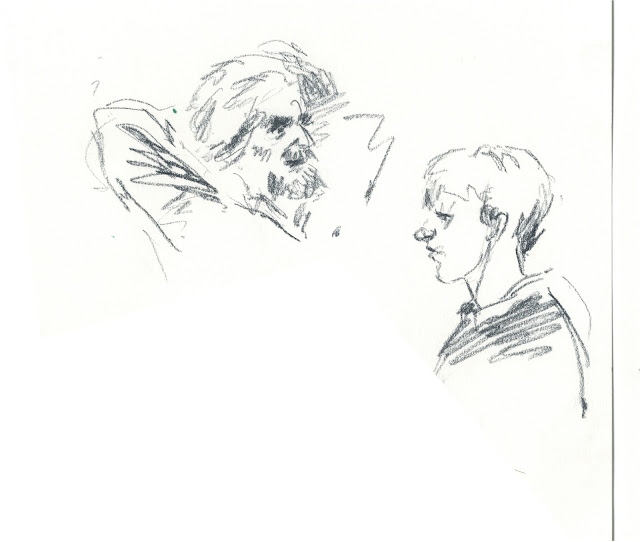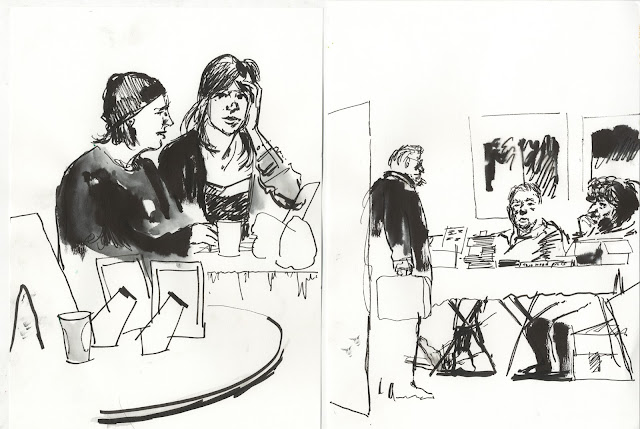Carnet de Lettonie (Latvia Book) is a 2005 book by the French Bande dessinée artist Christophe Blain and published by Casterman. It is a document of a journey Blain made to Latvia, told using a mixture of comic sketches and watercolour and line drawings. The drawings are charming and Blain strikes a nice balance between careful observation of a scene or landscape and a more fluent, spontaneous approach:
My copy of the book is in French and, being under 35 and English, I therefore understood very little of the story until I ran a google translator over it to write this post (I had been happily enjoying the drawings knowing only that it was about a car journey somewhere in eastern Europe.) Blain was invited to a festival in Riga aimed at promoting the image of Latvia abroad and so decided to drive there with his sketchbook - he was accompanied by a guide and translator from the festival - and use the images to make a book. He made two trips in summer and winter, documenting the Baltic landscape of snow-covered forests and wildernesses and the Stalinist architecture of Riga, the port capital. His watercolours are not those of the amateur artist but rather of the comic-book colourist; direct and bold:
Blain's artwork demonstrates that drawn reportage is often best attempted by comic artists or cartoonists (Searle, Steadman etc) - or at the very least experienced graphic artists whose drawing hand is well-practised. Drawing on location requires being able to express things quickly in shorthand while drawing on a wide-ranging graphic knowledge and technique:
Taking this a stage further, Blain brings his comic-book persona into the book directly, often annotating his drawings with small comic sketches of events (usually depicting himself with red nose streaming in the cold):
Blain's approach - a mix of full sketchbook pages, colour paintings and annotations and notes - might be worth considering in regards to my own work for this project. His book is in large part simply a published sketchbook of an experience of a place - and succeeds largely on these terms. I enjoyed it with no knowledge of what it was about or where and without being able to read the language. The balance of the book, however - the fact that there is more to it than the sketchbook - prevents it at times from becoming monotonous. All these things will be worth considering should I choose to make a small book myself.



























































